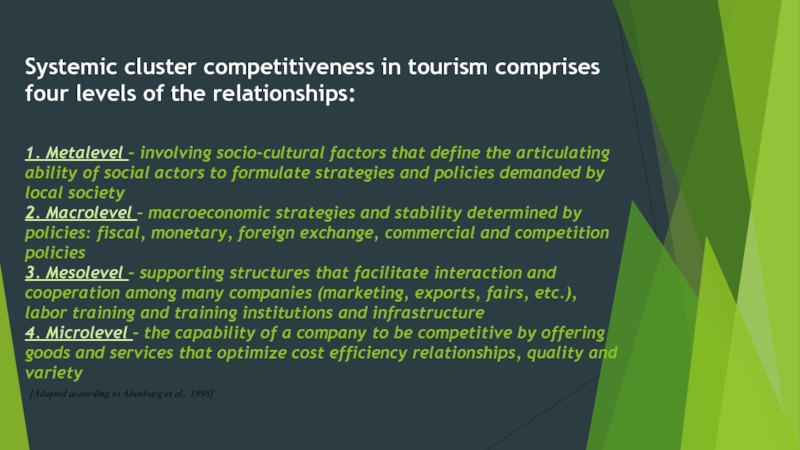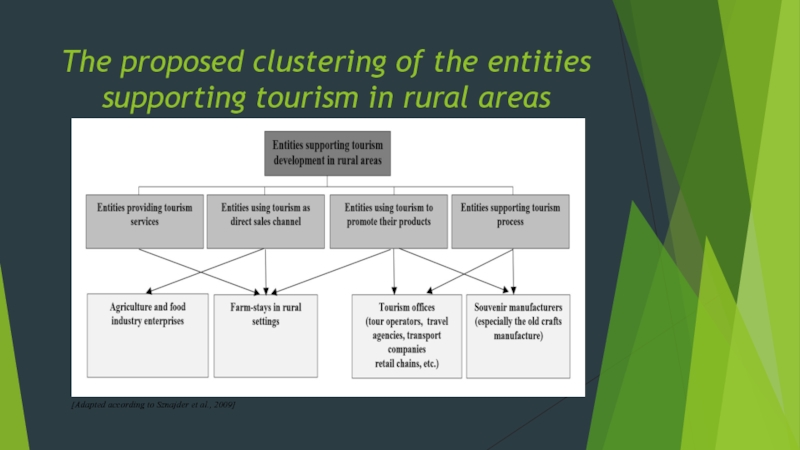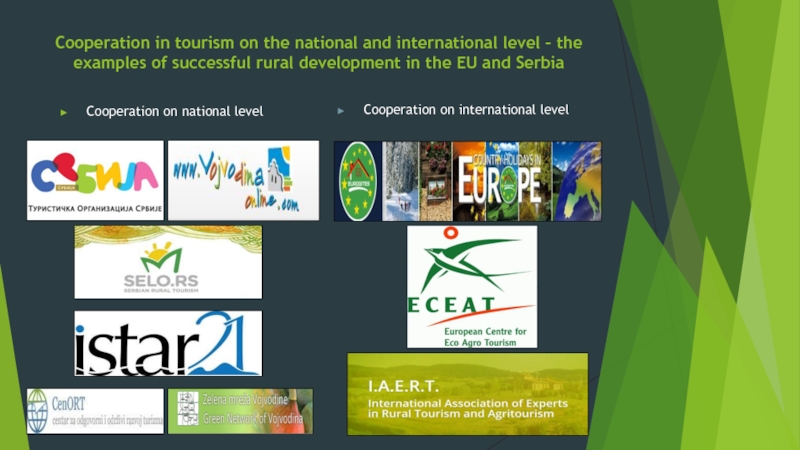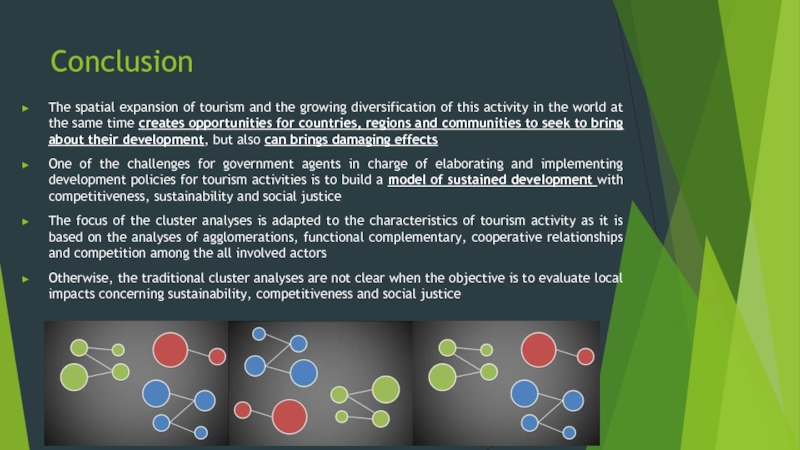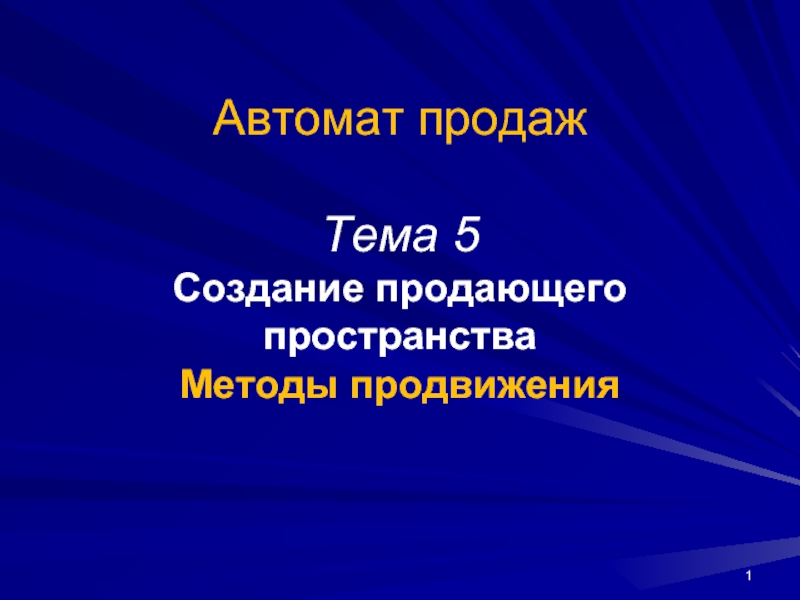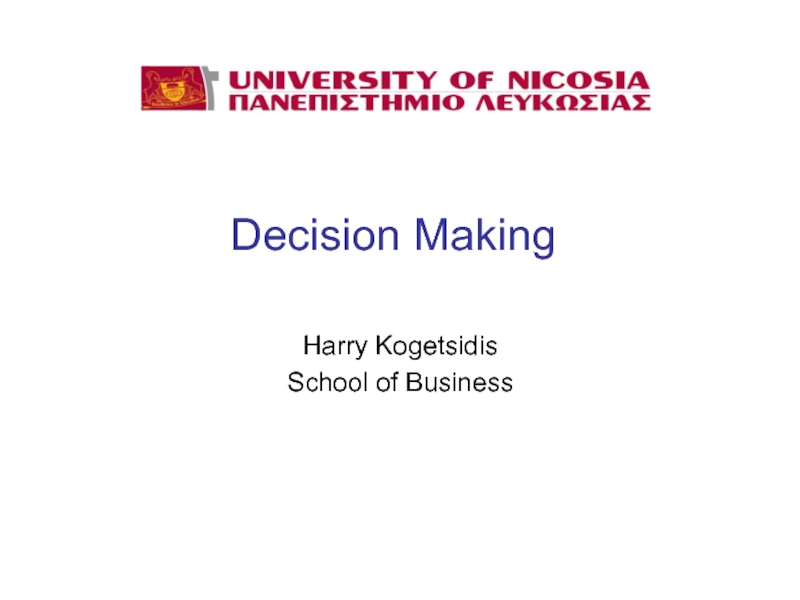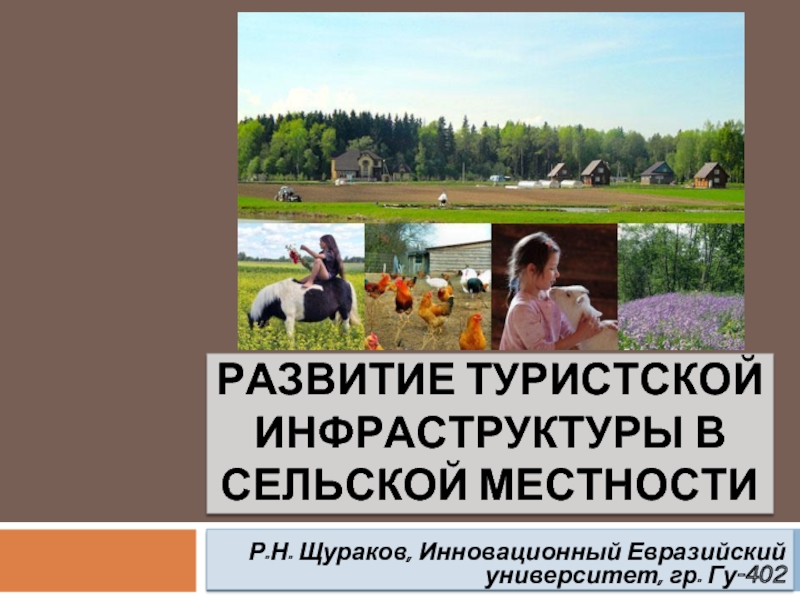- Главная
- Разное
- Дизайн
- Бизнес и предпринимательство
- Аналитика
- Образование
- Развлечения
- Красота и здоровье
- Финансы
- Государство
- Путешествия
- Спорт
- Недвижимость
- Армия
- Графика
- Культурология
- Еда и кулинария
- Лингвистика
- Английский язык
- Астрономия
- Алгебра
- Биология
- География
- Детские презентации
- Информатика
- История
- Литература
- Маркетинг
- Математика
- Медицина
- Менеджмент
- Музыка
- МХК
- Немецкий язык
- ОБЖ
- Обществознание
- Окружающий мир
- Педагогика
- Русский язык
- Технология
- Физика
- Философия
- Химия
- Шаблоны, картинки для презентаций
- Экология
- Экономика
- Юриспруденция
Foreign tourism clusters презентация
Содержание
- 2. Introduction Over the last few decades, tourism
- 3. The definitions of the “cluster in tourism”
- 4. Some of the good examples of “tourism clustering” are…
- 5. THE EXAMPLE NO. 1
- 6. THE EXAMPLE NO. 2
- 7. THE EXAMPLE NO. 3
- 8. THE EXAMPLE NO. 4
- 9. The tourism cluster can be understood in
- 10. The proposed model of the clustering of
- 11. Systemic cluster competitiveness in tourism comprises four
- 12. The proposed clustering of the entities supporting
- 13. Cooperation in tourism on the national and
- 14. Conclusion The spatial expansion of tourism and
- 15. THANK YOU FOR YOUR ATTENTION! All
Слайд 1
FOREIGN TOURISM CLUSTERS
AN OVERVIEW AND THE EXAMPLES
Marko D. Petrovic, Ph.D.
South Ural
Слайд 2Introduction
Over the last few decades, tourism has been one of the
Since the 1980s, the fast internationalization process and the opening of national economies have boosted tourism to becoming one of the most growing global sector (second only to the financial sectors) [Silveira, 2002]
But for the successful tourism, it is necessary to have not only attractive resources, capacities and high-quality products, but also an adequate training, well-designed marketing and efficient organization
The concept of cluster is situated in specific characteristics of tourism activities. The tourism product interacts with local base (physical space and social actors), leading to joint actions of inter-related enterprises with great power to create conglomerates
Слайд 3The definitions of the “cluster in tourism” and its characteristics
Cluster in
The characteristics define the cluster potential of tourism activities:
the complementarities and interdependence among the parts of a tourism conglomerate occur through the interaction and organization of the local actors
the necessary integration of people, culture, economy and nature results in actions and interventions, which come true in a systemic way
the power of attraction depends on the differing potential of the tourism product and the supporting services
Слайд 9The tourism cluster can be understood in two ways:
Horizontal –
1. the agreements between enterprises that have the same principal activity, i.e. among enterprises that deal with entertainment, transport, catering…
2. the agreements between enterprises working with the same group of customer satisfaction, but offering different product components to the customers
Vertical – by the creation of strategic nets, where there is the establishment of a unilateral supplier/customer relation among the partners
This can be organized in such a way that the object activities of the agreement are fulfilled by one of the parts, which gives its output to the other in exchange for a payment
[Rodrigues, 2001, p. 307]
Слайд 10The proposed model of the clustering of tourism
[Adapted according to da
Слайд 11Systemic cluster competitiveness in tourism comprises four levels of the relationships: 1.
[Adapted according to Altenburg et al., 1998]
Слайд 12The proposed clustering of the entities supporting tourism in rural areas
[Adapted according to Sznajder et al., 2009]
Слайд 13Cooperation in tourism on the national and international level – the
Cooperation on national level
Cooperation on international level
Слайд 14Conclusion
The spatial expansion of tourism and the growing diversification of this
One of the challenges for government agents in charge of elaborating and implementing development policies for tourism activities is to build a model of sustained development with competitiveness, sustainability and social justice
The focus of the cluster analyses is adapted to the characteristics of tourism activity as it is based on the analyses of agglomerations, functional complementary, cooperative relationships and competition among the all involved actors
Otherwise, the traditional cluster analyses are not clear when the objective is to evaluate local impacts concerning sustainability, competitiveness and social justice
Слайд 15THANK YOU FOR YOUR ATTENTION!
All questions or suggestions regarding this presentation
South Ural State University, Chelyabinsk, October 19, 2017
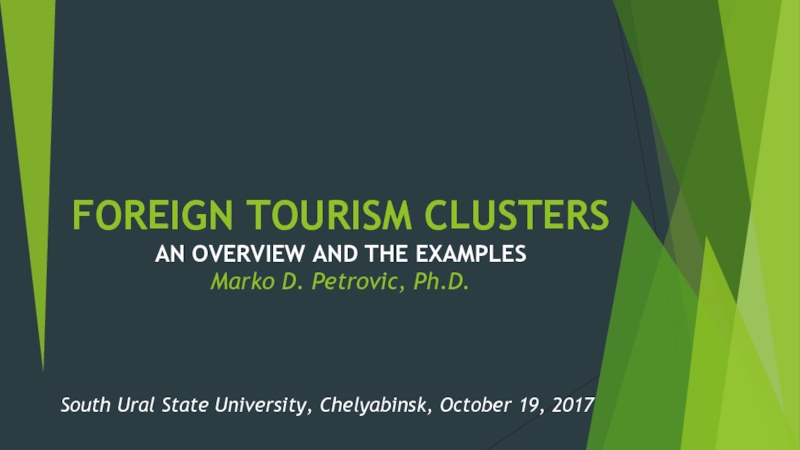
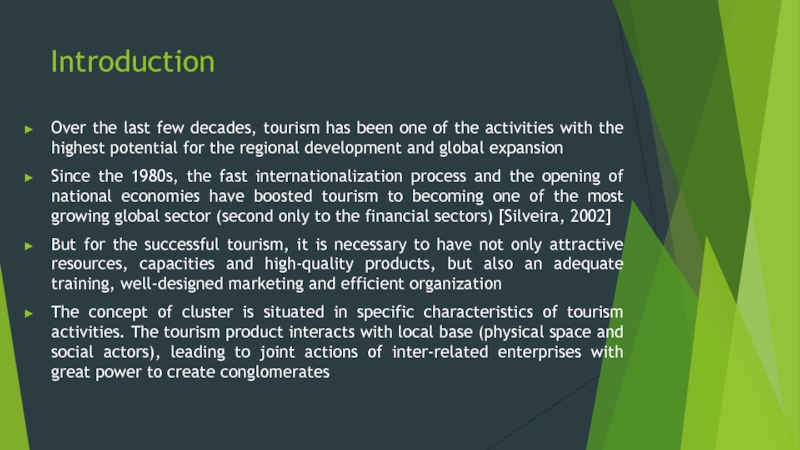
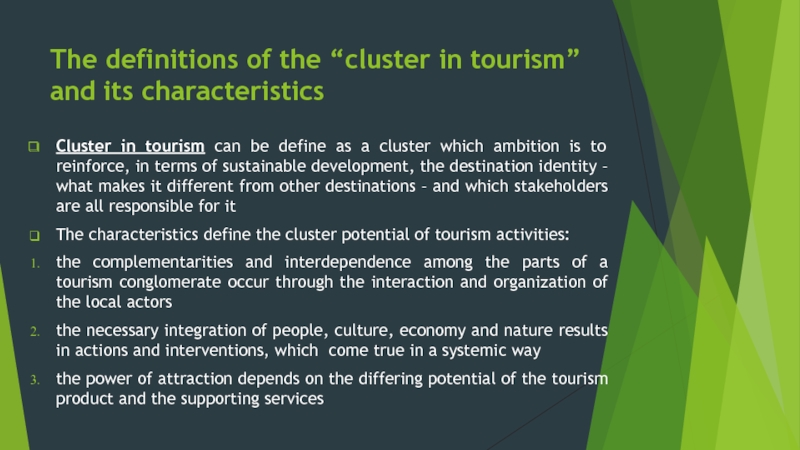
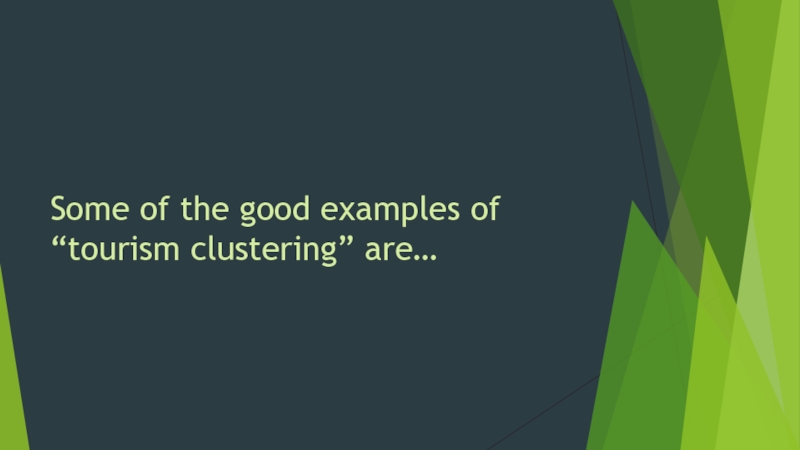
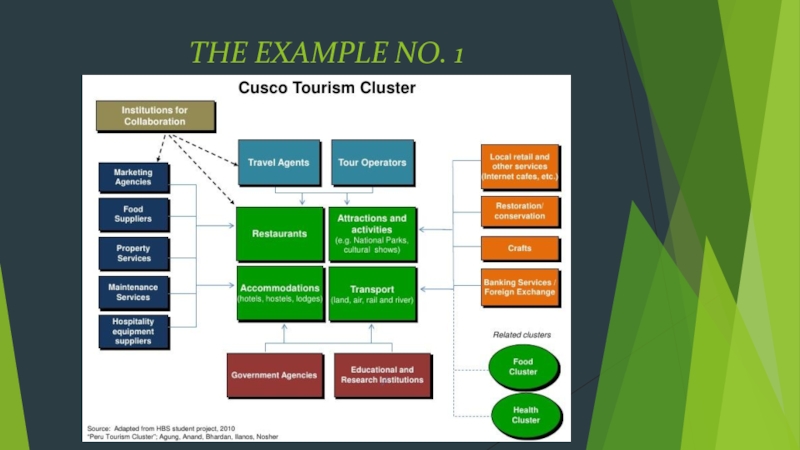
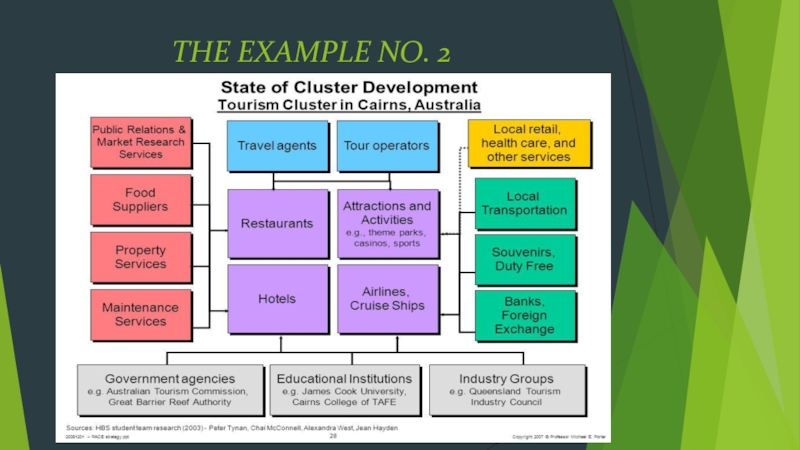
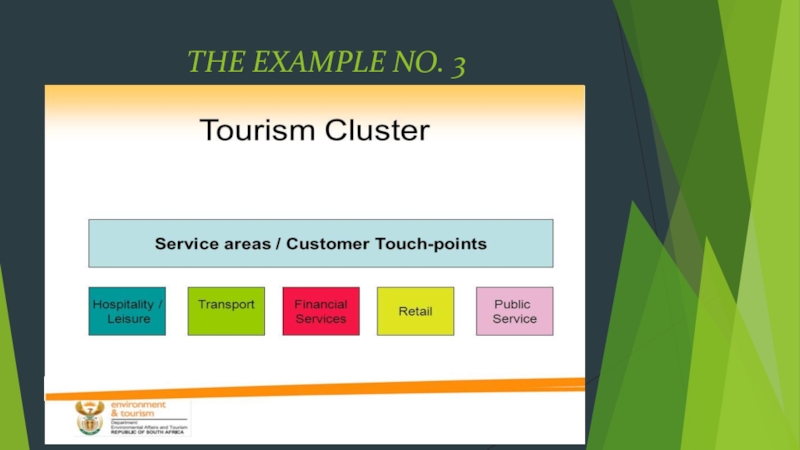
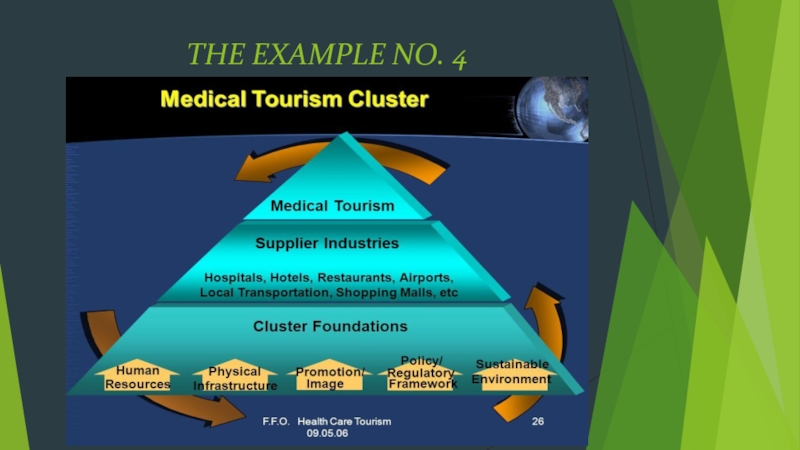
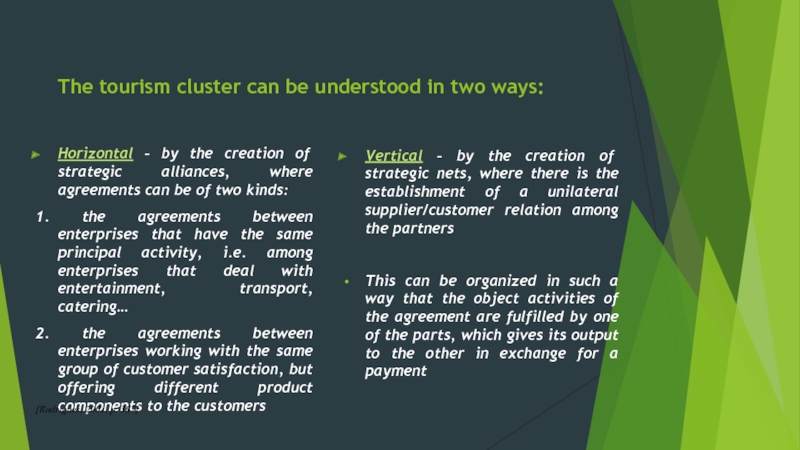
![The proposed model of the clustering of tourism[Adapted according to da Cunha & da Cunha, 2005]](/img/tmb/1/75257/0381b5061fb0c026868c66b2293029e4-800x.jpg)
